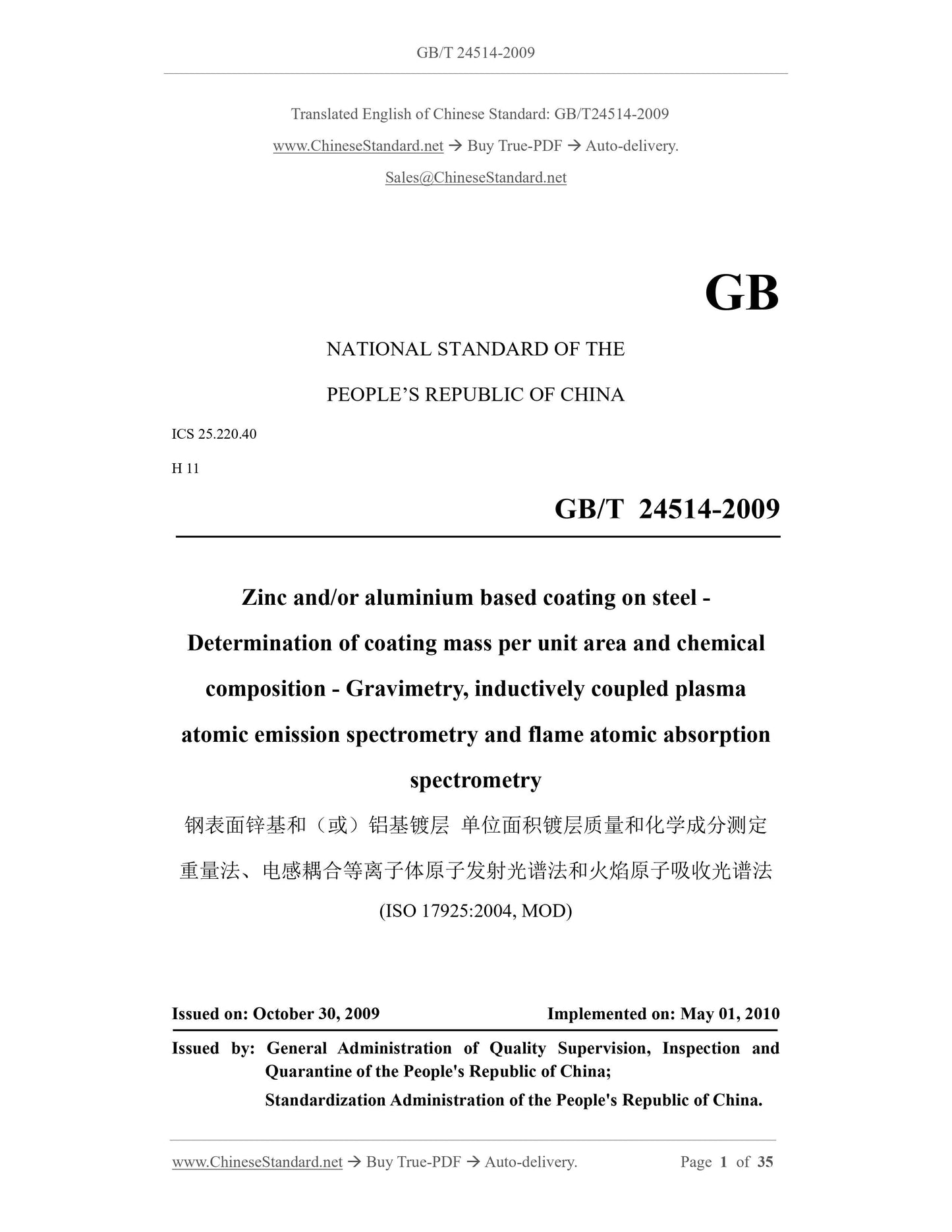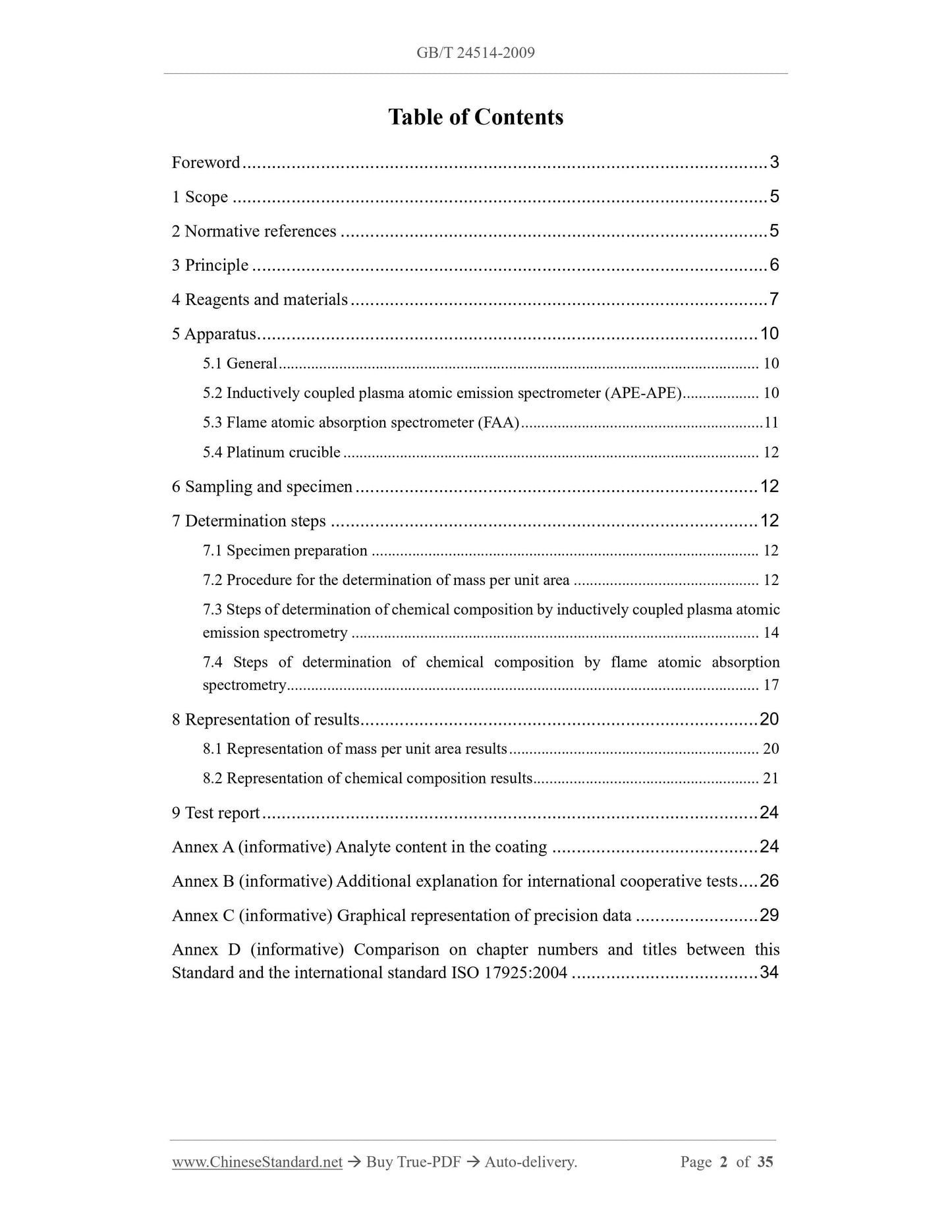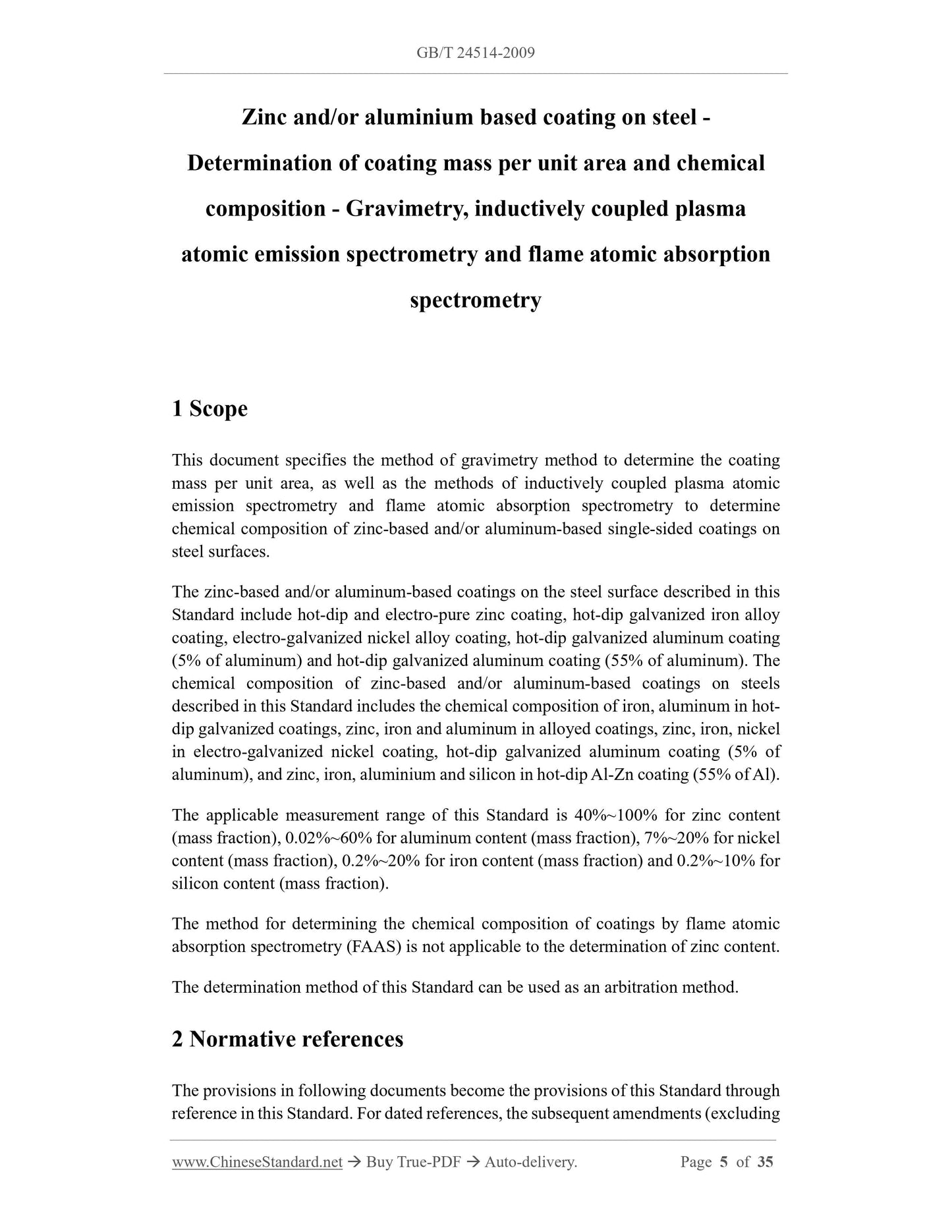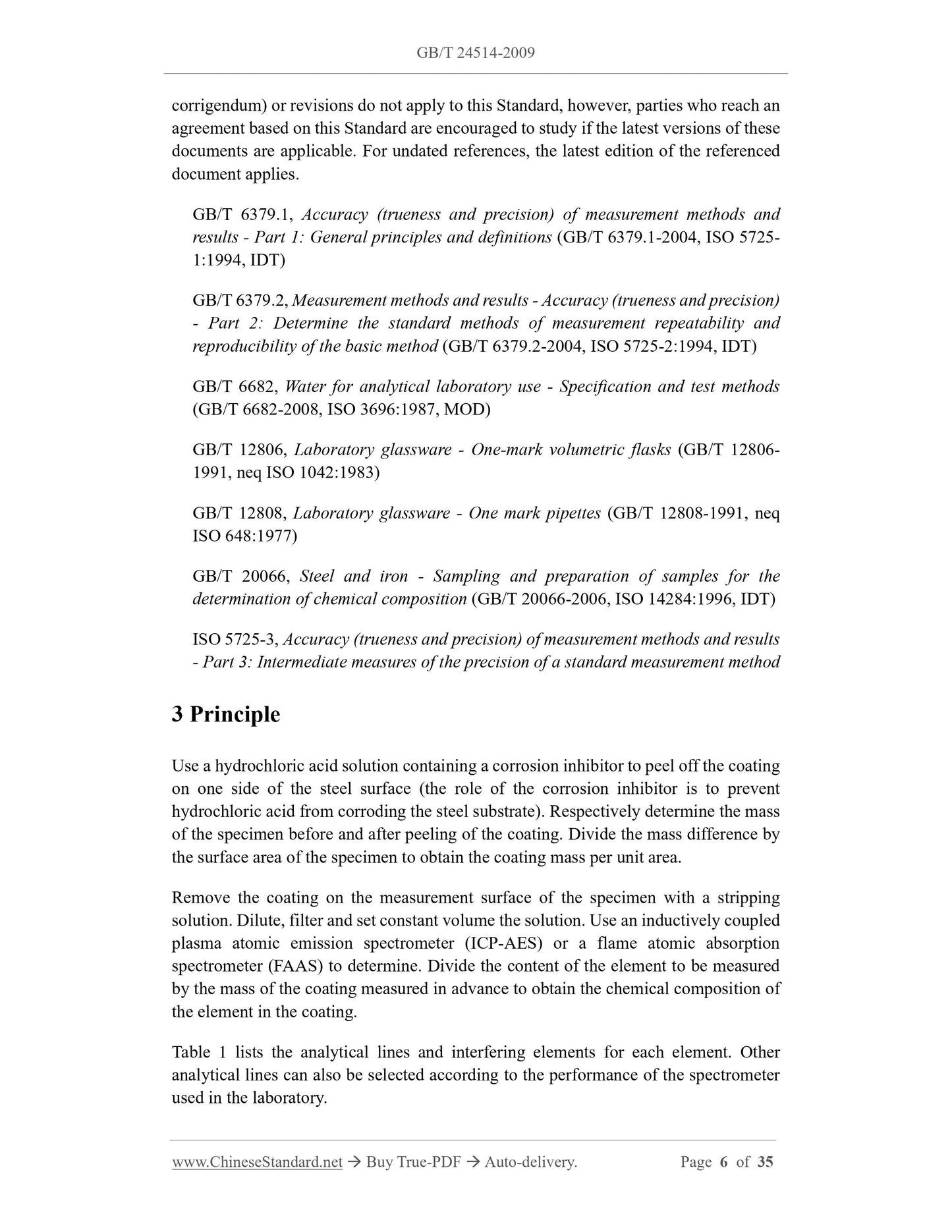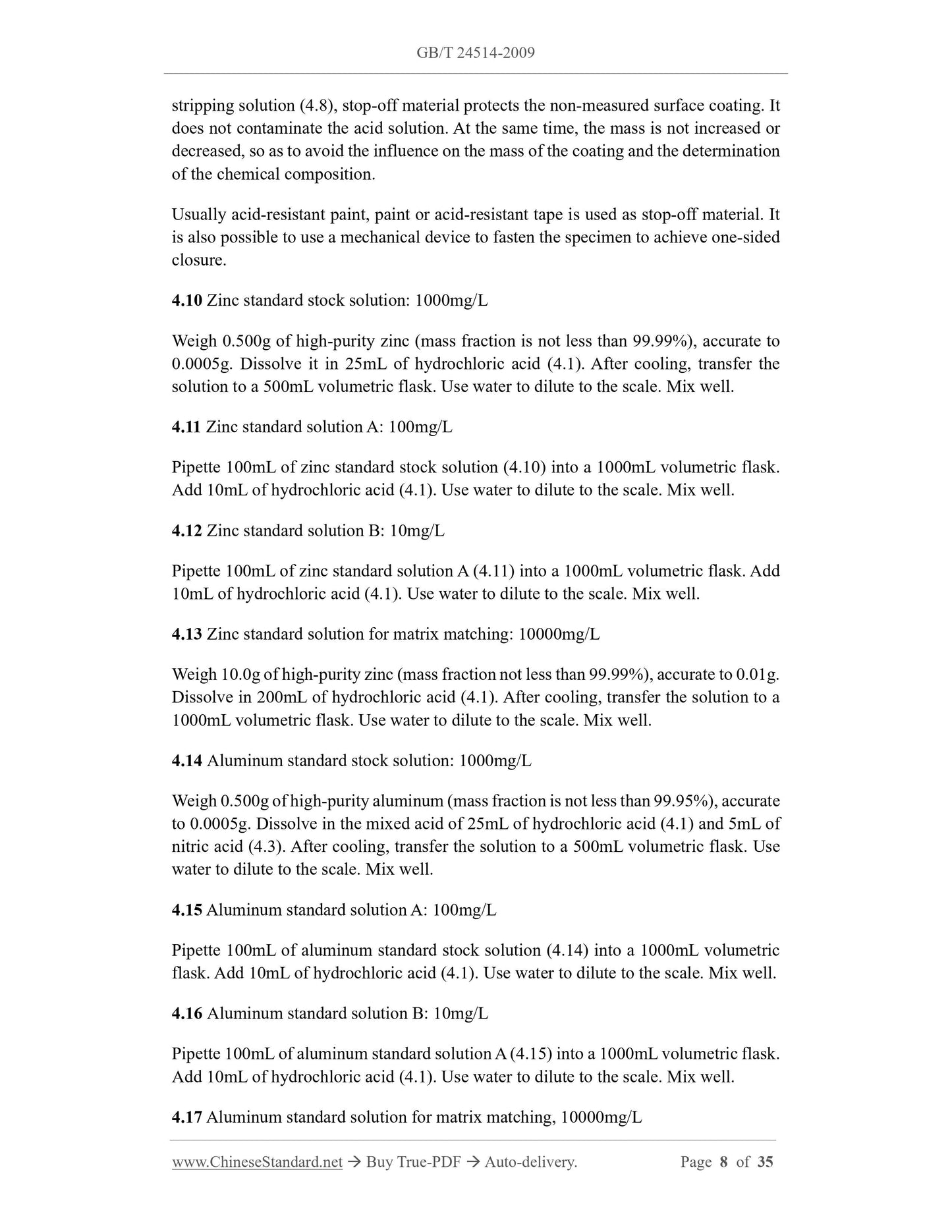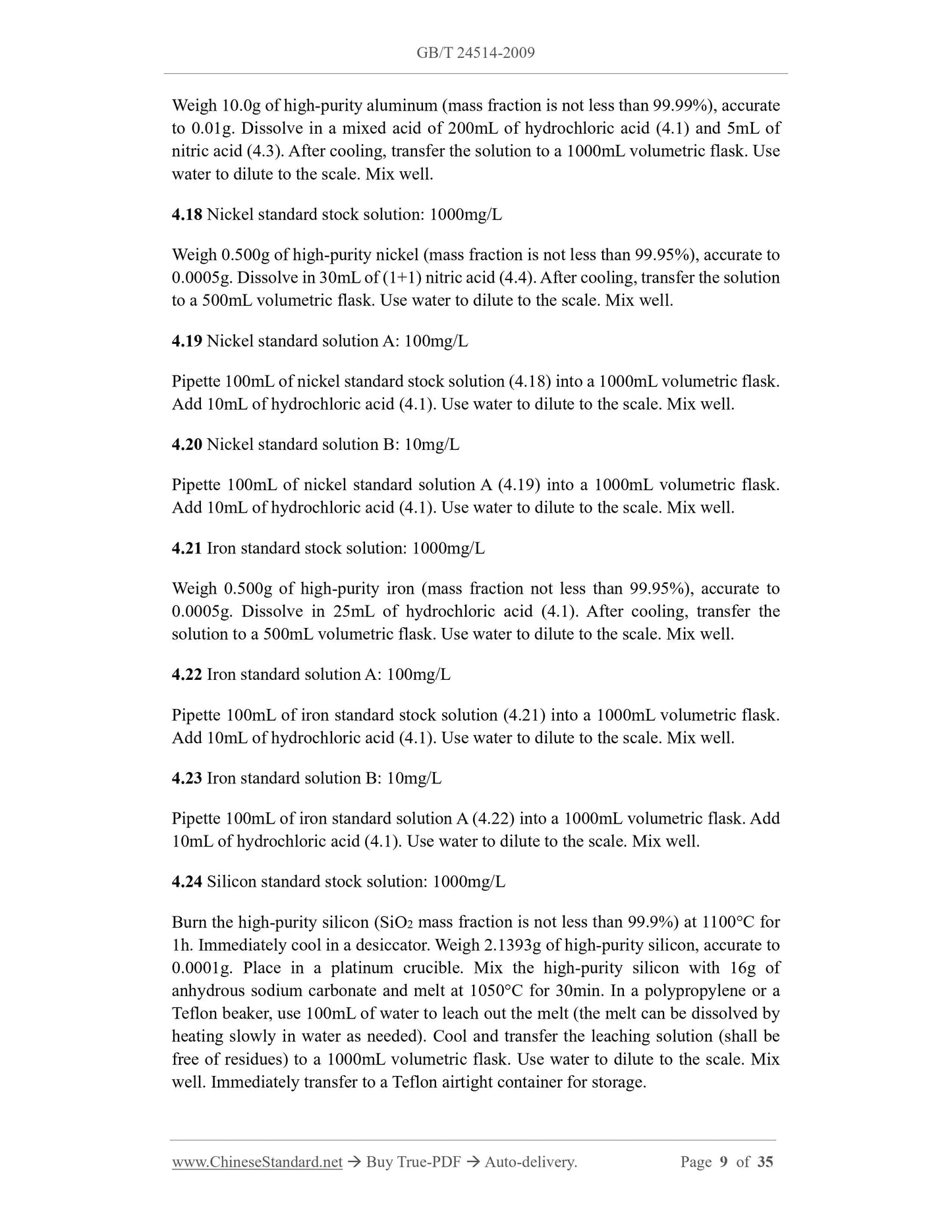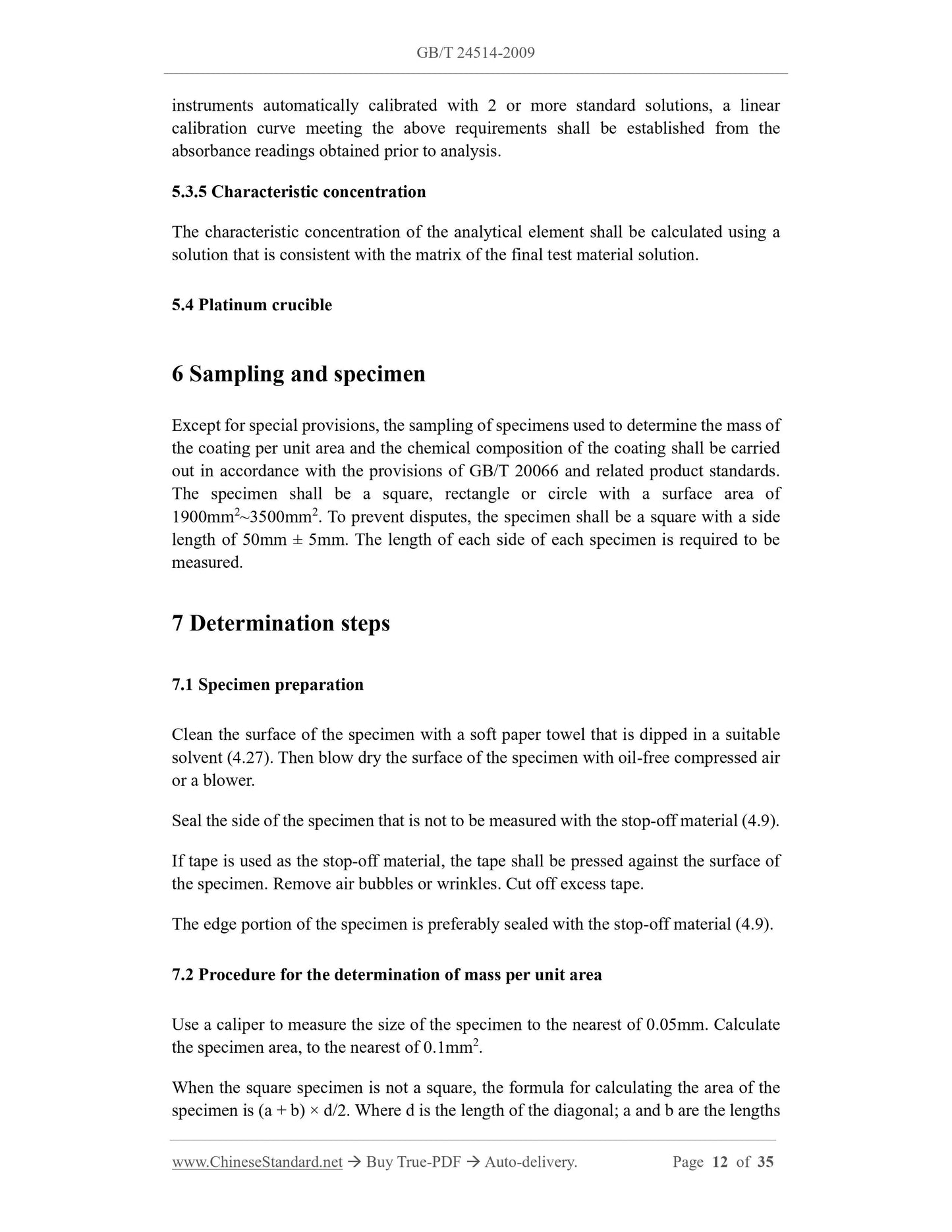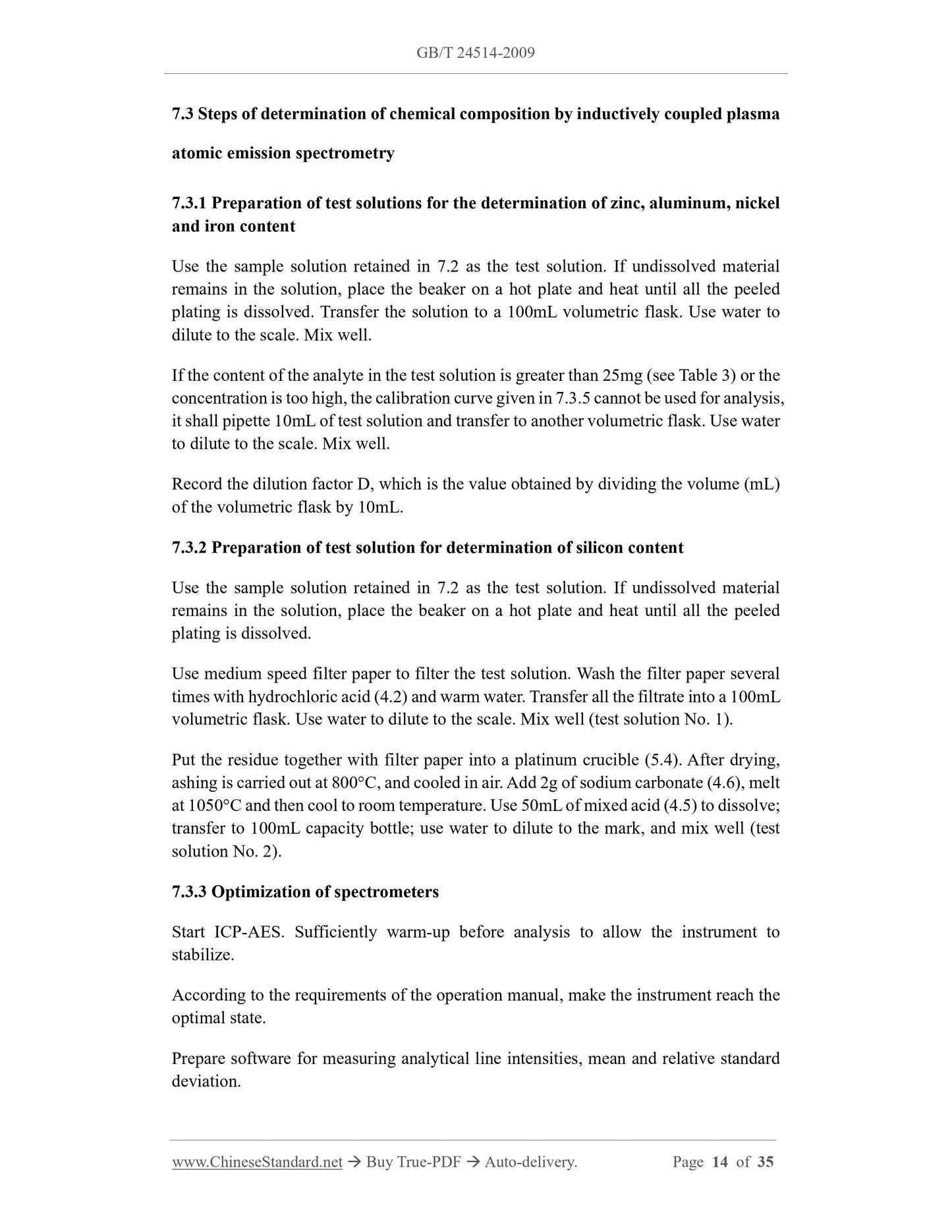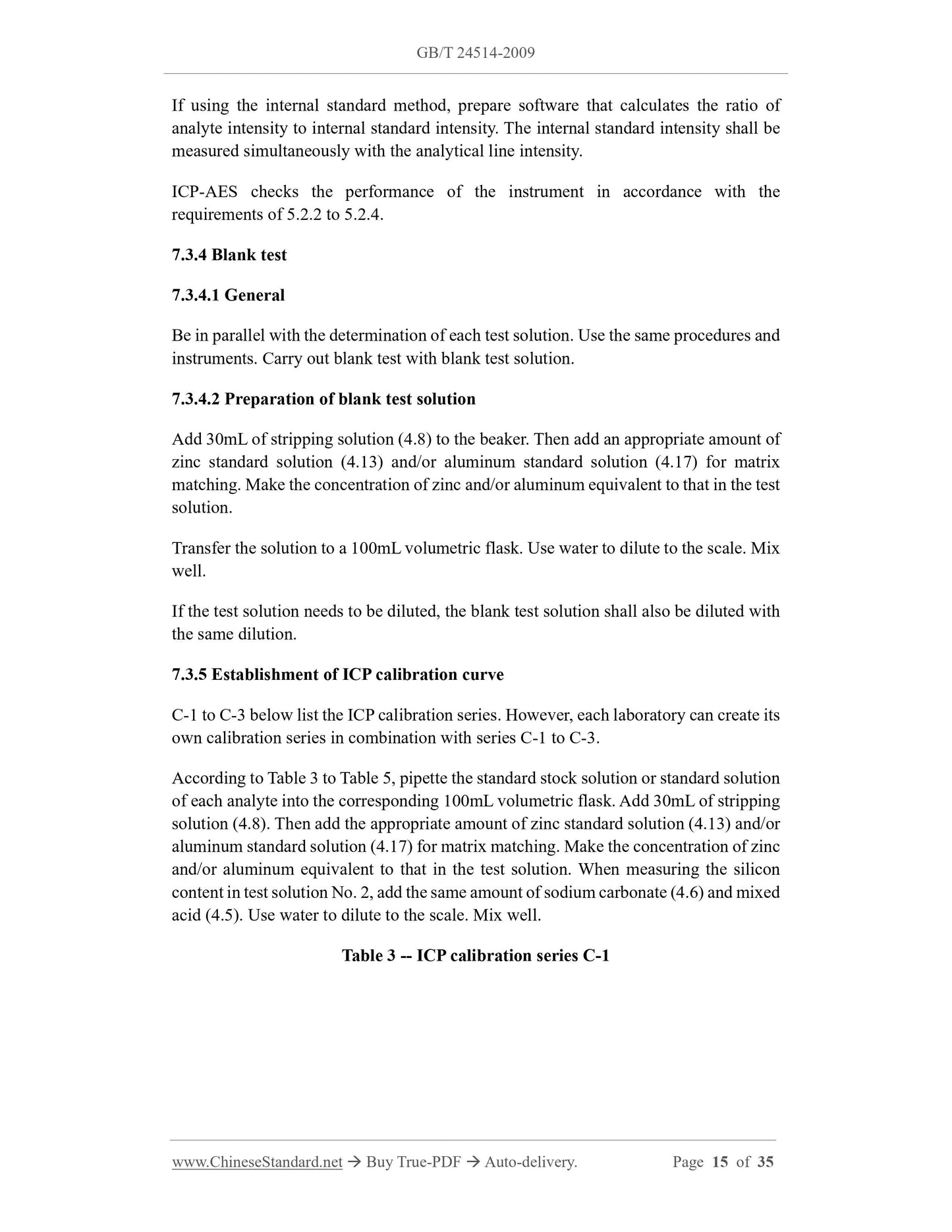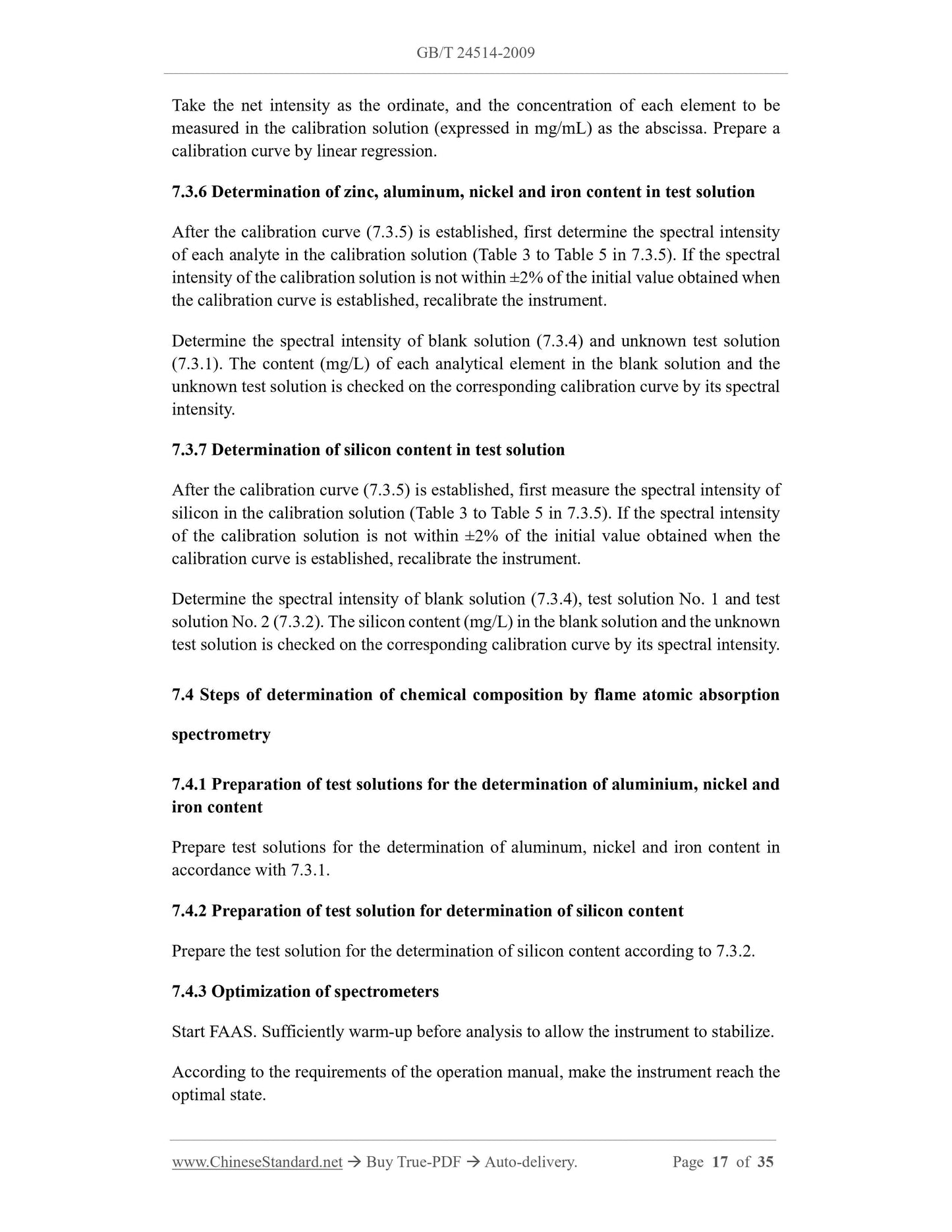1
/
of
10
www.ChineseStandard.us -- Field Test Asia Pte. Ltd.
GB/T 24514-2009 English PDF (GB/T24514-2009)
GB/T 24514-2009 English PDF (GB/T24514-2009)
Regular price
$430.00
Regular price
Sale price
$430.00
Unit price
/
per
Shipping calculated at checkout.
Couldn't load pickup availability
GB/T 24514-2009: Zinc and/or aluminium based coating on steel -- Determination of coating mass per unit area and chemical composition -- Gravimetry, inductively coupled plasma atomic emission spectrometry and flame atomic absorption spectrometry
Delivery: 9 seconds. Download (and Email) true-PDF + Invoice.Get Quotation: Click GB/T 24514-2009 (Self-service in 1-minute)
Newer / historical versions: GB/T 24514-2009
Preview True-PDF
Scope
This document specifies the method of gravimetry method to determine the coatingmass per unit area, as well as the methods of inductively coupled plasma atomic
emission spectrometry and flame atomic absorption spectrometry to determine
chemical composition of zinc-based and/or aluminum-based single-sided coatings on
steel surfaces.
Basic Data
| Standard ID | GB/T 24514-2009 (GB/T24514-2009) |
| Description (Translated English) | Zinc and/or aluminium based coating on steel -- Determination of coating mass per unit area and chemical composition -- Gravimetry, inductively coupled plasma atomic emission spectrometry and flame atomic absorption spectrometry |
| Sector / Industry | National Standard (Recommended) |
| Classification of Chinese Standard | H11 |
| Classification of International Standard | 25.220.40 |
| Word Count Estimation | 27,255 |
| Date of Issue | 2009-10-30 |
| Date of Implementation | 2010-05-01 |
| Quoted Standard | GB/T 6379.1; GB/T 6379.2; GB/T 6682; GB/T 12806; GB/T 12808; GB/T 20066; ISO 5725-3 |
| Adopted Standard | ISO 17925-2004, MOD |
| Regulation (derived from) | National Standard Approval Announcement 2009 No.12 (Total No.152) |
| Issuing agency(ies) | General Administration of Quality Supervision, Inspection and Quarantine of the People's Republic of China, Standardization Administration of the People's Republic of China |
| Summary | This standard specifies the method of coating mass per unit area determined by gravimetric method. Convergence and inductively plasma atomic emission spectrometry and flame atomic zinc-based steel surface and (or) method of the chemical composition of the aluminum -sided coating absorption spectrometry. |
Share
